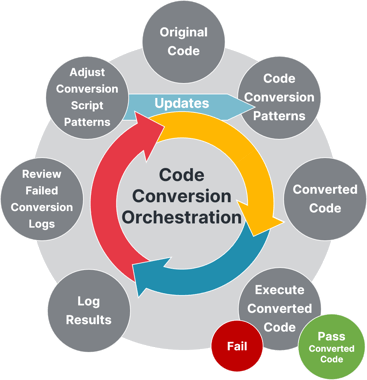
Teradata to Snowflake Migration
Written by Admin

For years Teradata was an MPP database leader, and a go-to database for large data footprints. However, weighed by its legacy, Teradata could not bring granular just-in-time elasticity control to their platform. Because of this, Snowflake is replacing many Teradata deployments, providing cost-efficient, low touch, and high throughput MPP in the cloud. However, migrating from Teradata to snowflake is not a project you just “throw bodies at," like traditional Systems Integrators would recommend.
Taking on a Teradata migration to Snowflake requires pattern-based automated accelerators which are made for such a task. In our Teradata to Snowflake migrations, Intricity has developed such accelerators which massively reduce the labor and time to completion. By breaking up the accelerators into nimble automations, Intricity’s migration specialists can iterate through the complexities between the two platforms in a manageable consulting services engagement.
Strategic Analysis of Complexity
This engagement starts with a short strategic assessment of the migration effort, which includes a detailed scan of the client's current Teradata footprint and any associated Integration to categorize levels of complexity and pattern reuse. This produces Empirical Counts and Complexity Levels for converting:
-
- Databases
- Tables
- Views
- Stored Procedures
- Functions
- ETL/ELT Jobs
- Orchestration Jobs
- Shell Scripts
Additionally, Intricity reviews downstream impacts on analytical applications and information consumption needs. This work effort is encapsulated in a short one-week engagement. The end result is a planned and fully costed migration along with a detailed breakdown of the complexity levels to be migrated.
With this effort empirically defined Intricity can effectively provide consultative options on whether the Teradata migration effort should take a “lift and shift” approach, a phased migration, or a re-architecting of the solution architecture. Having this knowledge is key to reducing the risk and costs as much as possible, as well as maximize the benefits of cloud computing with Snowflake.
Migration Factory

Once the strategic analysis has completed, the development team sets up a migration factory by separating the identified patterns and prioritizing them. Then Intricity iterates through the prioritized patterns with its automated accelerators through a controlled migration process. This process ensures that both patterns as well conversion code are continuously updating as the migration proceeds, thus the speed of conversion accelerates over the course of the project.
Intricity conducts this process for ETL Packages, Shell Scripts, Tables, Views, Stored Procedures, and Functions. At the end of this migration process your organization emerges with a completed conversion to Snowflake, enjoying all the operational benefits of just-in-time cloud elasticity for your data integration and warehousing.
Engaging Intricity
To review the Intricity migration from Teradata to Snowflake in more detail reach out to specialist@intricity.com review your specific use case.
Who is Intricity?
Intricity is a specialized selection of over 100 Data Management Professionals, with offices located across the USA and Headquarters in New York City. Our team of experts has implemented in a variety of Industries including, Healthcare, Insurance, Manufacturing, Financial Services, Media, Pharmaceutical, Retail, and others. Intricity is uniquely positioned as a partner to the business that deeply understands what makes the data tick. This joint knowledge and acumen has positioned Intricity to beat out its Big 4 competitors time and time again. Intricity’s area of expertise spans the entirety of the information lifecycle. This means when you’re problem involves data; Intricity will be a trusted partner. Intricity's services cover a broad range of data-to-information engineering needs:
What Makes Intricity Different?
While Intricity conducts highly intricate and complex data management projects, Intricity is first a foremost a Business User Centric consulting company. Our internal slogan is to Simplify Complexity. This means that we take complex data management challenges and not only make them understandable to the business but also make them easier to operate. Intricity does this through using tools and techniques that are familiar to business people but adapted for IT content.
Thought Leadership
Intricity authors a highly sought after Data Management Video Series targeted towards Business Stakeholders at https://www.intricity.com/videos. These videos are used in universities across the world. Here is a small set of universities leveraging Intricity’s videos as a teaching tool:

Talk With a Specialist
If you would like to talk with an Intricity Specialist about your particular scenario, don’t hesitate to reach out to us. You can write us an email: specialist@intricity.com
(C) 2023 by Intricity, LLC
This content is the sole property of Intricity LLC. No reproduction can be made without Intricity's explicit consent.
Intricity, LLC. 244 Fifth Avenue Suite 2026 New York, NY 10001
Phone: 212.461.1100 • Fax: 212.461.1110 • Website: www.intricity.com

